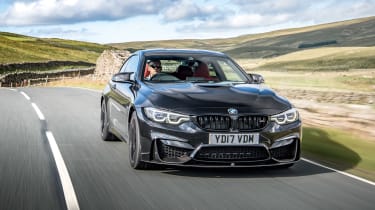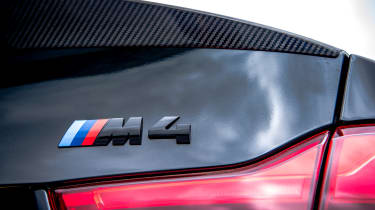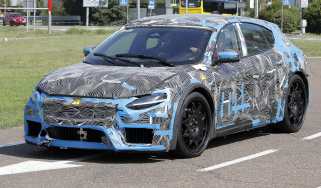BMW M4 (F82, 2014-2020) review – a flawed M car that became a brilliant one
We didn’t love the F82 M4 when we first drove it, but it evolved into a hugely exciting and capable coupe later in its life
Be in no doubt that in the saloon-based performance coupe sphere, BMW doesn’t only know how to play the game, it pretty much created it. So when BMW launched the F82 M4 back in 2014, its mixed reception didn’t so much come as a surprise, but rather bewilderment about what could have possibly gone wrong.
It lacked the controllability of the best M cars, and on wet roads it could very quickly catch you out. Some of this was due to the fact that the F82 was the first of its kind to adopt turbocharging, and though that meant punchy outputs from its 3-litre straight-six, the chassis wasn’t always able to handle what was thrown at it.
Since those early cars, though, the M4 (and its four-door M3 sibling) underwent multiple revisions which made it the car it always should have been. It also toughened up with the introduction of more focused Competition Pack, CS and GTS models – useful at a time when Alfa Romeo was threatening the M Division’s crown with the Giulia Quadrifoglio, and the Mercedes-AMG C63 still had an endlessly appealing V8.
The M4’s speed has never been in doubt, and you could never describe it as dull or benign. But did it do enough to cement itself as a truly great M car, or do the lingering foibles of early examples make it one to avoid?
BMW M4 in detail
- Engine, gearbox and technical highlights > The 3-litre, twin-turbocharged straight-six develops 424bhp, but the real drama comes from the torque, which peaks at 406lb ft from just 1850rpm
- Performance and 0-60mph time > The M4 matches the performance of supercars from not long ago, hitting 62mph in 4.1sec and reaching 155mph. The most impressive figure, however, is a 0-100mph time of 8.6sec
- Ride and handling > The F82 is lighter than the E92 it replaced, and as a result is more alert and agile – at the expense of some feel
- Interior and tech > The M4's age comes through in the interior, but quality and tech have stood up well
- MPG and running costs > With a turbocharged engine, the M4 is more frugal and efficient than previous generations
- Design > The M4 stands out from the regular 4-series with a ‘powerdome’ bonnet, swollen wheelarches, deep air intakes and quad-tailpipes
Price and rivals
Today, used early F82s are incredibly tempting, with decent examples starting from as little as £20k. If it were us, we’d spend around £3k more to bag a Competition Package car, which was transformed by stiffer springs, retuned adaptive dampers and a remapped limited-slip differential, as well as gaining an extra 19bhp.
The next step up from the Competition, the CS, is much more scarce on the used market, and the cheapest examples come in at around £35k. At that price it’s up against tidy examples of Alfa’s Giulia Quadrifoglio. To drive, the Giulia is progressive and engaging, while the engine remains exciting right the way to its 7000rpm redline. It also puts out a sound that's easily on par with the M4, but not quite a match for a turbocharged V8 C63, which you can also bag for similar money.
The rarified, hardcore M4 GTS sits in a different price bracket altogether; just 30 of the lightweight, caged and stiffened up trackday specials made it to the UK, and you can expect to pay over £70k to secure one. At that price, you could go for a 718 Cayman GT4, or a 996 GT3 for something older and more analogue.






